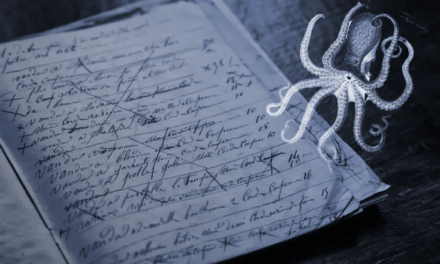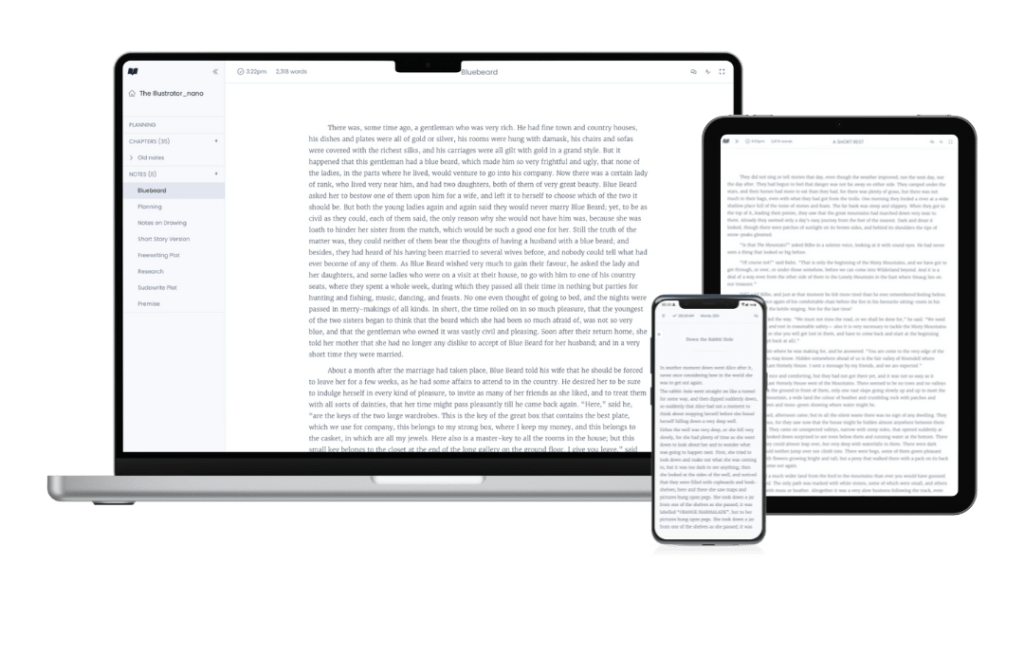
How to Write a Mystery or Crime Thriller (with Downloadable Template)

The mystery and crime thriller genre has captivated readers for centuries, drawing them into a world of suspense, intrigue, and the darker aspects of human nature. From the early days of Edgar Allan Poe’s short story, The Murders in the Rue Morgue (widely considered to be the first modern detective story), to the bestsellers of Gillian Flynn and Michael Connelly, the genre has evolved to encompass a wide range of styles and subgenres, each with its own unique twist on the classic whodunnit formula.
At its core, the mystery/crime thriller is a puzzle; an intellectual challenge that invites the reader to solve the crime alongside the protagonist. Whether it’s a hardboiled detective novel, a cozy mystery, or a psychological thriller, the genre is defined by its central question: who committed the crime, and why? To answer this question, writers must carefully construct a plot that balances suspense, clues, and red herrings, leading the reader on a journey of discovery that culminates in a satisfying resolution.
Let’s explore the critical elements of writing a compelling mystery or crime thriller, from the initial setup to the final resolution. We’ll break down the crucial plot beats that every mystery novel should hit, and offer tips and techniques for keeping your readers engaged and guessing until the very end.

Act 1: Introduction and Setup
Act 1 should make up no more than 25% of the story and introduce the protagonist, establish your story setting, introduce other key characters (like potential allies and the antagonist), and set up an investigation.
In Act 1, you should have done the following:
- Introduce the protagonist.
- Establish your setting.
- Have a crime take place.
- Introduce the key characters.
- Begin an investigation.
- Start your protagonist’s private life subplot.
Stage 1: Setting the Scene
To begin your story, you want to hook your readers into your protagonist’s world. Start with a point of action that sets up the type of person your protagonist is. Show them caught in a moment of tension where they can show off their skill set. You want your readers to see how your protagonist works under pressure.
In this first scene, you’ll also want to establish your setting and hint at your protagonist’s internal life. What kind of world do your characters inhabit, and what place do they hold within it? Hint at your protagonist’s internal goals, motivations, and conflicts.
Stage 2: A Crime Takes Place
Crime thrillers are fast-paced, so once your readers are invested in your protagonist, you want to dive into the action as quickly as possible.
Now that your protagonist is firmly rooted in their world, a terrible event shakes their ordinary existence. For a thriller, the crime should be something out of the ordinary that captures the interest and attention of the protagonist. It could be a high-profile case, an unusual victim, an oddly staged crime, or something that holds personal meaning to the protagonist.
This is also when you can introduce potential allies and mentors who will be your protagonist’s support network throughout the story. You should also hint at any details of the crime that might become important later on, including some red herrings that you can use as a distraction or to create a conflict later on.
You should also hint at your antagonist’s psyche here. The nature of the antagonist should be a partial driver for your protagonist’s desire to solve the mystery.
Stage 3: The Investigation Begins
As the investigation begins, your protagonist will either be assigned to the case or take it upon themselves to solve it. In this stage, you’ll want to dive into the suspects, their characters, motives, means, opportunities and alibis.
This section should introduce a twist that shows that the mystery is not as simple as it first appears. It should grab your reader’s attention and foreshadow something that will be revealed later in the plot.
How the protagonist deals with this twist is where you can begin to develop and consider your subplot. For instance, your protagonist could be focused on getting the mystery solved as quickly as possible, so downplays the importance of the twist, or they could be the only one who sees its significance, and their suspicions are ignored by those around them.
How your protagonist feels about the state of the mystery at this point will lead directly into Act 2.
Subplot
In Act 1, you want to introduce a subplot that will serve the essence of your story rather than progress the central plot. It should represent a theme that is universal to your readers, which will end in a personal or professional resolution for your protagonist.
The subplot in a mystery or crime thriller usually stems from a crisis in the protagonist’s private life or a moral dilemma they must confront. Common themes could be battling addiction, maintaining a work/life balance, or overcoming a past trauma or professional mistake. The subplot also offers an opportunity to introduce love interests and side characters; just make sure they’re introduced at times pertinent to your story and its pacing.
A subplot may unfold independently of or coincide with the events of the main plot; just make sure you combine them seamlessly in a way that makes sense to the way the story is developing. They must develop together so the subplot enhances rather than overpowers the main narrative.

Act 2: Unravelling the Mystery
During Act 2, the investigation should move toward a solution that proves to be false, sending the search in another direction. Act 2 raises the stakes, creates obstacles, and introduces consequences for both the community and the investigator personally to further the subplot.
A community consequence could be anything from additional victims or the revelation of secrets best kept hidden. A personal consequence could be a professional setback or a breakup of the investigator’s family.
Act 2 should include:
- Raised stakes.
- Red herrings and false leads.
- Additional clues and foreshadowing.
- A change in the suspect pool.
- Further development of the protagonist’s subplot.
Stage 4: The Wrong Conclusion
As your protagonist collects and analyses clues, it leads them to a conclusion that makes sense on the surface but is ultimately proven to be wrong. This could be because of pressures from co-workers or family, a blind spot that leads them to ignore a key piece of evidence, or even a suspect who lies about an alibi. Either way, your protagonist must re-evaluate how they approach the mystery and either widen their suspect pool to include new people or narrow it down by eliminating those who seemed most obvious.
With the first failure to solve the mystery, introduce the consequences for if the mystery is not solved. What does failure mean for the protagonist personally or professionally, and what impact will it have on the community or setting of your story?
Stage 5: The Investigation Widens
In the middle of Act 2, you can introduce fresh characters and suspects, injecting new energy into the narrative to move the pacing along. As the initial investigation hits a dead end, your protagonist must pivot their approach, uncovering fresh revelations that cast suspicion in unexpected directions.
This section serves as a platform to introduce additional characters, sow seeds of doubt among both new and established figures, and unveil information that may not seem immediately relevant but ultimately points toward the resolution. Through interrogations, physical investigations, or the discovery of new evidence, the narrative subtly hints at the ultimate solution. Importantly, also consider how this section intertwines with the subplot, potentially deepening character arcs or introducing parallel dilemmas that add layers to the overarching story.
Stage 6: A Threat of Violence
As tensions escalate and the investigation deepens, a palpable threat of violence should loom over the narrative. The once-seemingly innocuous inquiries now stir hostility among certain suspects, leaving your protagonist acutely aware of the dangers inherent in their pursuit of truth.
Within this stage, the narrative takes a darker turn, revealing the raw emotions simmering beneath the surface from suspects, friends, family, and co-workers. The stakes are raised as the protagonist grapples not only with unravelling the mystery but also with navigating personal peril.
This is where alliances are tested and allegiances questioned. Every step forward is met with resistance, and every revelation brings the protagonist closer to danger. But here, the protagonist can begin to confront not only external threats but also their own fears and vulnerabilities.
Subplot
Much of the subplot in Act 2 will tie in with the narrative stages in this act. Each stage will affect the protagonist’s personal life in some way, accentuating their inner conflict and turmoil, and strain their relationships.
The subplot can also be used to provide readers with much-needed downtime in a section that is action-packed. Showing moments of calm in the protagonist’s personal life or developing their relationships is an excellent way to build story momentum while giving your readers a break from non-stop action.

Act 3: Hidden Revelations
As Act 3 begins, your story will move in a fresh direction as an unexpected event shatters the protagonist’s previous assumptions. As the story comes to a head, your protagonist will uncover new information, find hidden motives and secrets, and previous clues will finally make sense for readers.
As Act 3 draws to a close, the mystery and the protagonist’s personal subplot will be resolved.
Act 3 should include:
- A twist that changes the course of the investigation.
- A revelation of hidden motives for all remaining suspects.
- The clarification of previous red herrings and clues.
- Resolution of the protagonist’s personal subplot
Stage 7: Taking Stock
As the protagonist presents their findings, both the reader and the characters can reassess the case. At this point, the crime should seem impossible to solve. The protagonist may have misinterpreted clues, hit dead ends, or been intentionally led astray by the antagonist, and the reader should question the protagonist’s abilities to find justice.
In the face of this block in the case, the protagonist must use all their skills to reframe the crime and look for a fresh perspective. By laying out the evidence, inconsistencies can become apparent, and gaps in the protagonist’s knowledge will be revealed, leading to a shift in how they approach the crime.
Stage 8: A New Outlook
As the protagonist meticulously re-evaluates the case, a seemingly insignificant clue from a previous Act will be the key to solving the case. Previously brushed aside, this now pivotal clue will be the lynchpin on which the entire resolution rests, and the protagonist should be the first to uncover it.
The context for this reveal should have been hinted at in revelations in previous stages and can even weave into the protagonist’s personal subplot. Here, the protagonist’s journey of personal growth should parallel the unravelling of the central mystery.
Stage 9: The Solution Draws Near
As the investigation progresses, the protagonist inches closer to unravelling the mystery. As the protagonist progresses, so should the reader, as clues slowly form a clear picture.
The protagonist carefully assesses the evidence, withholding their conclusion from the other characters for now as they first wish to substantiate their theory. Drawing on information gathered from interrogations and conversations with various characters (both new and re-evaluated from previous stages of the narrative), they put the pieces of the crime together alongside the physical evidence.
Armed with this knowledge, the protagonist works to uncover additional evidence to validate their conclusion and prepare to bring this to their wider circle.
Stage 10: Climax
As the narrative intensifies, it brings readers to the story’s climax, and a tense confrontation unfolds between the protagonist and the antagonist—the tension mounts as the antagonist becomes ever more desperate as they are cornered. A unique object or signature introduced early in the narrative could be used here to tie the narrative together, full circle.
With the puzzle pieces finally falling into place, the protagonist unveils the crucial clues and the deductive process that led them to capture the antagonist. This will end in the protagonist’s ultimate victory as the truth emerges.
As the story draws to a close, you can choose a neat resolution with justice being served, or end with a tantalising hook that hints at an open ending.
Subplot Resolution
At some point in Act 3, the subplot reaches its conclusion. You can choose to have this tie in with the story’s climax or resolve it earlier to push the protagonist toward the resolution.
Throughout the narrative, the protagonist has navigated not only the complexities of the case but also their personal trials, so the resolution of their subplot should show how they have grown and changed.
The subplot can be neatly tied up, or you could leave some threads dangling for future exploration if this is part of a series. You may choose to continue this personal development across multiple books, but even so, there should be some finality to the subplot, even if this is the case. Readers want to leave the story satisfied.
Download the template
You can download the template below to use it for your next project and import it directly into Novlr. If you go to the Projects page from your Novlr dashboard and click on “Import,” the template will automatically split your project into sections for easy plotting!
Writing a mystery or crime thriller is a complex mode of story telling that requires careful planning (even if that planning comes after you’ve already finished your first draft!), skillful execution, and a deep understanding of the genre’s conventions and expectations. By mastering the key plot beats, from the initial setup to the final resolution, you can craft a story that keeps your readers engaged, guessing, and ultimately satisfied with the outcome.
Remember, the heart of any great mystery or crime thriller is the central puzzle, the question of who committed the crime and why. To keep your readers invested in this question, you must create a compelling protagonist, a richly-drawn cast of suspects and allies, and a plot that balances suspense, clues, and misdirection. You must also pay close attention to pacing, ensuring that each plot beat serves to advance the story and deepen the mystery.
































